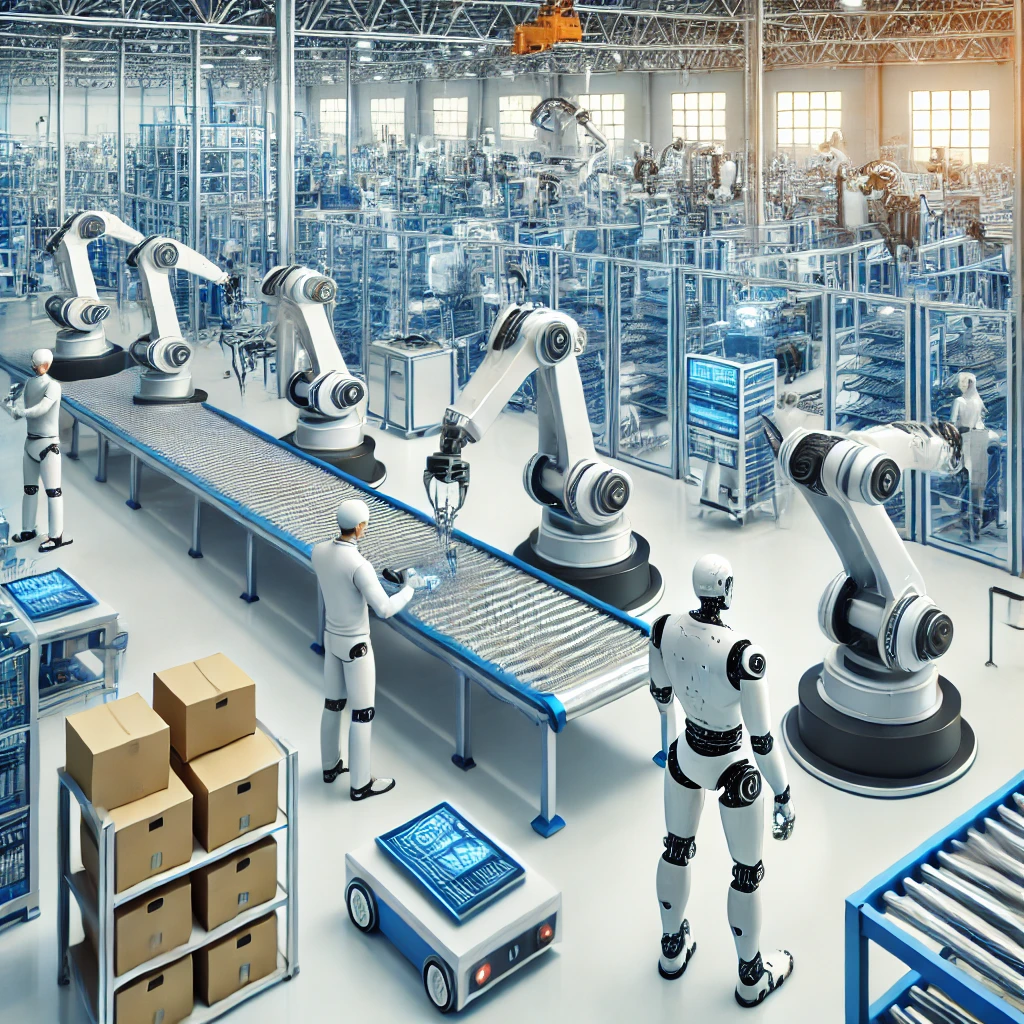Robotics in Manufacturing: Enhancing Productivity
Learn how robotics is revolutionizing manufacturing processes, improving efficiency, and reducing costs.

Learn how robotics is revolutionizing manufacturing processes, improving efficiency, and reducing costs.


The integration of robotics in manufacturing has revolutionized the industry, bringing about significant improvements in productivity, efficiency, and cost reduction. In this article, we explore the various ways robotics is transforming manufacturing processes and the benefits it offers to businesses.
One of the most significant advantages of incorporating robotics into manufacturing is the dramatic increase in efficiency. Robots are capable of operating 24/7 without fatigue, ensuring consistent production rates and reducing downtime. This continuous operation leads to higher output and faster turnaround times.
Robots excel in performing repetitive tasks with high precision, reducing the likelihood of errors and defects. This precision ensures that products meet strict quality standards, leading to fewer returns and increased customer satisfaction. The ability to maintain uniformity in production is particularly beneficial in industries where consistency is crucial.
While the initial investment in robotics can be substantial, the long-term cost savings are significant. Robots can reduce labor costs by performing tasks that would otherwise require human workers. Additionally, their ability to work continuously without breaks or shifts helps to maximize productivity and minimize overhead costs.
Robotics can take on hazardous tasks that would pose risks to human workers, such as handling toxic materials or performing operations in extreme environments. By delegating these dangerous jobs to robots, manufacturers can enhance workplace safety and reduce the incidence of workplace injuries.
Modern robotics systems are highly adaptable, allowing manufacturers to reconfigure production lines quickly and efficiently. This flexibility is crucial in responding to changing market demands and enables businesses to scale their operations up or down as needed without significant delays or additional costs.
The future of robotics in manufacturing looks promising, with advancements in artificial intelligence and machine learning expected to further enhance robotic capabilities. Innovations such as collaborative robots (cobots), which work alongside human workers, and increased connectivity through the Industrial Internet of Things (IIoT) are set to drive the next wave of productivity improvements in the manufacturing sector.
In conclusion, the adoption of robotics in manufacturing is not just a trend but a necessity for businesses aiming to stay competitive in today's fast-paced market. By improving efficiency, precision, and safety while reducing costs, robotics is paving the way for a more productive and resilient manufacturing industry.
